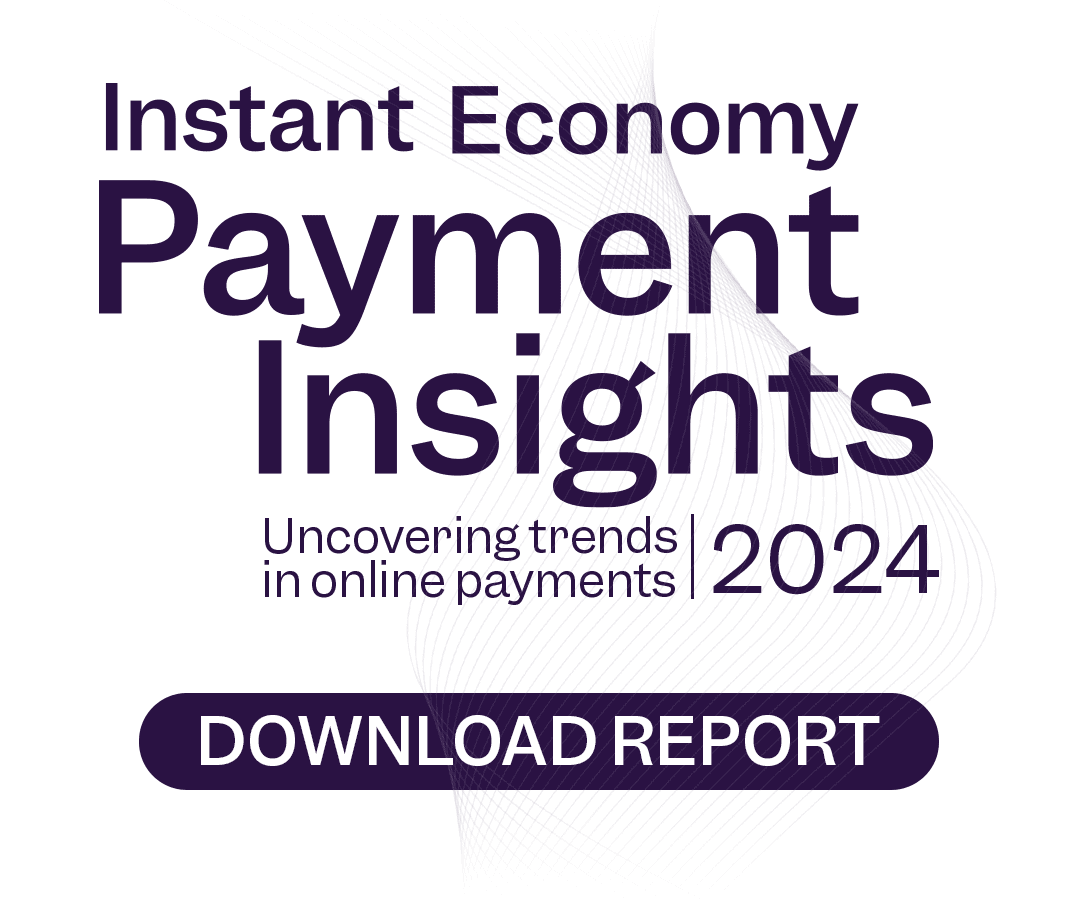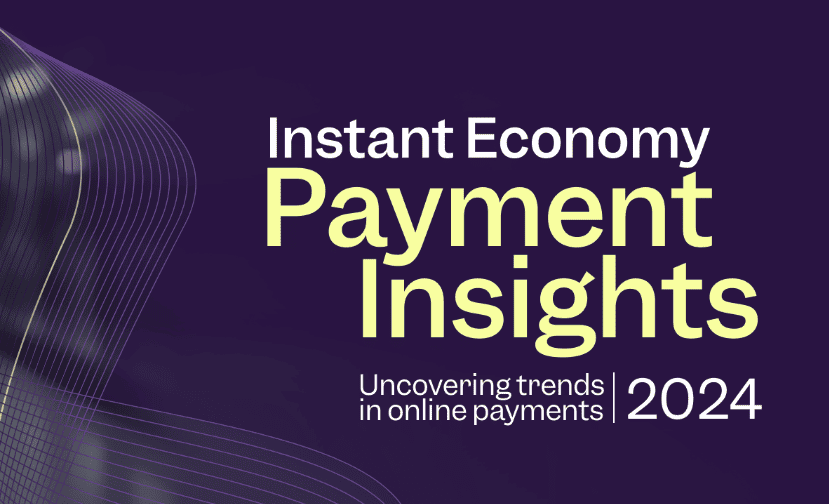
Pay by Bank is rapidly becoming an integral part of the instant economy. Indeed, in many European markets and across demographics, its popularity is second only to debit cards in online consumer usage, according to a 2024 Brite and YouGov report. This is a particularly intriguing insight when combined with the knowledge that the entire digital payment market will reach US $510 billion by 2032.
With that thought in mind, this article explores whether 2024 will be the year that Pay by Bank’s widespread acceptance and integration into the financial ecosystem will increase further. Is 2024 the year every business and merchant should be offering Pay by Bank at checkout? Pay by Bank being the category of payments based on the direct transfer of funds between bank accounts – and the consumer-facing term for instant account-to-account (A2A) payments.
We will touch on the following Pay by Bank-related topics, including:
- How we got here: a brief history of evolving payments
- Pay by Bank (and open banking) in the spotlight
- Overcoming the barriers to adoption
- The future is now: the rise of Pay by Bank
Read on to learn more and discover never-before-seen insights from our recent survey on the instant economy and the role Pay by Bank has to play in the future of online payments.


How we got here: a brief history of evolving payments
There’s been incredible innovation in digital payment solutions over the last half-century. From the first ATM arriving in the late 60s to the coming into force of the second iteration of the Payment Services Directive (PSD2) in 2018, digital payment solutions are mainstream, increasingly embedded, and perhaps most importantly, still evolving. Digital wallets and Pay by Bank are now being thoroughly embraced by consumers, becoming leading online and offline payment methods.
Changing consumer habits
Collaborating with YouGov, Brite surveyed nearly 8,500 people from six European markets (Netherlands, Finland, Germany, UK, Spain, and France) in January 2024 to understand the range of attitudes and preferences towards online payment methods.
While payment preferences varied, as expected, one of the most frequently used methods was debit cards, with 36% of our sample using a debit card online at least once a week. Similar research by UK Finance revealed that in November 2023 alone, there were 2.21 billion debit card transactions made by UK cardholders both in the UK and overseas, making it, by far, the most popular payment method. By comparison, there were just 379.3 million credit card transactions over the same period.
Online Payments in 2024
Meanwhile, our research found that in most of the markets surveyed, Pay by Bank was second only to debit cards in terms of online usage. Showcasing that today’s online consumer prefers innovative digital payment solutions that offer speed, convenience, and security.
For example, Pay by Bank was most popular across all markets among Generation Z (encompassing 18-29 year-olds in the Brite report), indicating that younger consumers are among the leading drivers of next-gen digital payment solutions. Olle Kruber, Analytics Lead, at Brite Payments suggests that: “Younger consumers have high expectations when it comes to the payment experience. They demand a one-stop shop where everything can be handled in just one go.”
“There’s a shift taking place – one that reflects a desire for immediacy and convenience, as well as the mobile-first nature of the instant economy. Merchants and businesses should bear this in mind when it comes to getting the right payments mix.”
However, while Pay by Bank is a popular option for younger consumers, it’s important to note that Pay by Bank isn’t just for Gen Z, as consumers from every generation reported being frequent users of Pay by Bank or willing to try. In fact, in the Netherlands (the country with the highest percentage of users of the payment method), older generations were found to use Pay by Bank even more!
Pay by Bank (and open banking) in the spotlight
But why is Pay by Bank having its moment? Could it be due to the adoption and use of new payment technologies across Europe by consumers and merchants? Indeed, open banking is very much the engine behind Europe’s increasing adoption of next-gen digital payment solutions, like Instant A2A Payments (a form of Pay by Bank). Europe and the Uk’s highly connected banking infrastructure means customers can quickly and easily send payments in 10 seconds or less thanks to the opening-up of bank APIs.
Because of this innovation, Pay by Bank is becoming highly familiar and convenient. Indeed, 80% of all those questioned in Brite’s Instant Economy Payment Insights report highlighted that ease of use was one of the most important reasons for trying a new payment method.
Likewise, Pay by Bank offers bank-level data security embedded throughout, meaning payments are highly secure and speedy. An astonishing 86% of respondents highlighted this as the most important factor when trying a new payment method. Indeed, the Inherent account verification steps within A2A Payments also mean fraud and chargeback attempts are almost non-existent, as well as helping to bypass additional processing fees. Analysing our survey results, it’s clear that this new generation of digital payment solutions stands head and shoulders above traditional methods for consumers and merchants.
While most of the infrastructure for Pay by Bank payment solutions comes via banks, proprietary payments networks like Brite’s own IPN exist to bridge coverage gaps and speed up reconciliation processes, combining many APIs into one flexible and powerful API. This means businesses across the continent can simply “plug-in” and offer Pay by Bank payments, or in Brite’s case, Instant A2A Payments which give customers the speed, safety, and convenience they want using one incredibly powerful API.
Overcoming the barriers to adoption
While the signs are promising for the future of Pay by Bank and Instant A2A Payments naturally, there are challenges, too, as Brite Payments’ Olle notes: “The majority of consumers are ready and willing to try new payment methods, others will take more convincing – conveying a sense of security and trustworthiness is essential to drive true adoption. This can be done through merchant incentives and checkout design.
“Breaking the habit, which many of us know from experience, can also be difficult – but is essential to drive adoption. If you are able to create a habit – getting people to adopt and use a new payment method repeatedly – you then help to create this critical mass of people. And repeat usage is ensured if a great payment experience is delivered time and time again, helping to convey a sense of security, which in turn helps to build trust.”
Leading on from this, Brite research showed that awareness of next-gen digital payment solutions varied by market. As mentioned Dutch consumers, for example, are ardent users of Pay by Bank, while Finnish and French consumers lag in usage online compared to the rest of our sample.
However, the general gist is that merchants seeking to stay ahead of the curve should embed next-gen digital payment solutions like Pay by Bank in their checkouts now. Consumers are largely willing to try new online payment as long as they meet strong expectations and offer the security and innovative features they crave – see Brite’s report for the full rundown of factors.
The future is now: the rise of Pay by Bank
Pay by Bank and its local variants, like iDeal in the Netherlands and Bizum in Spain, are already widely known to consumers. Rather, the payment solution is now at the point in its adoption phase where it simply needs to gain popularity amongst consumers of all age groups, which will take time, as “habit” was a significant consideration for consumers when choosing their preferred payment method (15% of respondents highlighted this as a factor).
Generational preferences may determine leading digital payment solutions over the long term, but there are short-term factors worth paying attention to. For instance, our research shows that regular users of Pay by Bank purchase more online in a range of industries than someone who never uses the payment method – suggesting that the payment method is already trusted by those who are more heavily invested in the instant economy.
Therefore, it is clear that merchants who support instant online payment methods within their payment mix are more likely to gain sales from consumers than those who don’t – again, see our report for the full industry breakdown. And while challenges persist, the potential for Pay by Bank to become a predominant payment method in 2024 and beyond is undeniable.
By understanding and addressing consumer concerns for convenience and safety, technological requirements, and market dynamics, stakeholders can pave the way for a more efficient, secure, and consumer-friendly payment ecosystem that increases revenue over time.
Understand the next era of digital payment solutions with Brite
To learn more about the current and future state of the instant economy and its leading payment methods, such as Pay by Bank, read our latest report. In it, we go in-depth into customer attitudes and perceptions towards online payment methods and share never-before-seen insights from across European markets, including the UK, Germany, and France.
Get your free copy today to find out more and prepare your business for the next generation of digital payment solutions powered by open banking.

